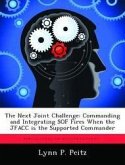The purpose of this monograph is to analyze the employment of fires brigades (FiB) in the global war on terror and determine if fires brigades are being utilized fully and in their doctrinal role. The US Army developed FiBs to replace the previous corps artillery and divisional artillery headquarters, and to be capable of operating as a modular organization with full spectrum capabilities. Army and joint doctrine are in agreement over the importance of synchronizing lethal and nonlethal fires. This importance is not present when evaluating army and joint COIN and stability doctrine. The organization of the FiB is significantly different from artillery brigades. The FiB has the capability to receive and support attached forces and conduct full spectrum operations including maneuver tasks previously assigned to only brigade combat teams. This monograph analyzes FiB organization and capability contained in doctrine and the employment of FiBs in current conflicts to recommend solutions for improving both lethal and nonlethal fires and the employment of FiBs. Army and joint doctrine form the foundation of operations and therefore must be examined with regard to fires employment. Fires brigade doctrine should be examined to determine if FiBs are being employed in accordance with doctrine and where their capabilities are maximized. Historical case studies of operations in both Iraq and Afghanistan provide insights into the positive and negative employment of FiBs and identify areas for improvement in their employment. Operation Iraqi Freedom (OIF) and Operations Enduring Freedom (OEF) illustrate the varied employment of fire brigades. These examples identify FiBs operating in a full spectrum role conducting both traditional maneuver and fires functions. The employment of FiBs in OIF and OEF identify both positive and negative examples of maximizing the FiB case studies reviewing the corps and division headquarters structure identify weaknesses in their fire support capabi








